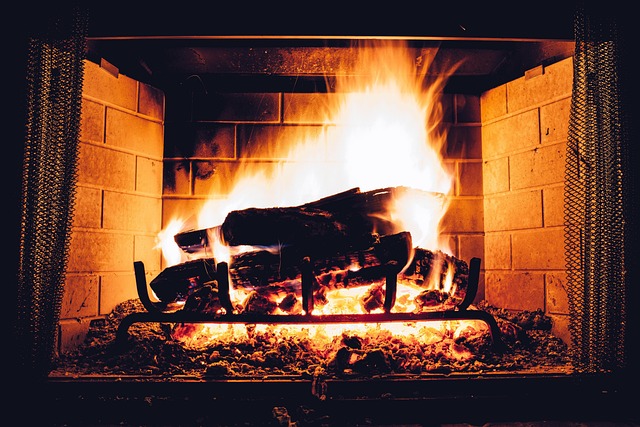Wood-Burning Stoves: Complete Guide to Selection and Use
Wood-burning stoves offer an efficient and environmentally conscious heating solution that combines traditional charm with modern functionality. These versatile heating systems provide reliable warmth while reducing dependence on fossil fuels, making them increasingly popular among homeowners seeking sustainable heating alternatives. Understanding the various types, design features, installation requirements, and maintenance needs helps ensure optimal performance and longevity from your wood-burning stove investment.

What Are the Different Types of Wood-Burning Stoves and Their Common Uses?
Wood-burning stoves come in several distinct categories, each designed for specific heating needs and applications. Catalytic stoves use a ceramic honeycomb catalyst to burn smoke and particulates at lower temperatures, providing longer burn times and higher efficiency ratings. These models work exceptionally well for primary heating in larger spaces and extended burning periods.
Non-catalytic stoves rely on a firebox design that creates secondary combustion through pre-heated air injection. They typically cost less than catalytic models and require minimal maintenance while providing excellent heat output for medium-sized areas. Hybrid stoves combine both technologies, offering the benefits of catalytic efficiency with non-catalytic simplicity.
Pellet stoves represent another category, using compressed wood pellets as fuel and featuring automated feeding systems. These units provide consistent heat output with minimal user intervention, making them ideal for busy households or those seeking convenience without sacrificing the wood-burning experience.
Which Materials and Design Features Influence Stove Performance?
Construction materials significantly impact stove durability, heat retention, and overall performance. Cast iron stoves excel at heat retention, radiating warmth long after the fire diminishes, making them perfect for consistent heating throughout the day and night. Steel stoves heat up quickly and respond rapidly to damper adjustments, providing immediate temperature control when needed.
Soapstone stoves offer superior heat storage capabilities, absorbing heat during active burning and releasing it gradually over extended periods. The firebox size determines burn duration and heat output, with larger fireboxes accommodating longer logs and providing extended burn times. Double-wall construction improves safety by keeping exterior surfaces cooler while maximizing internal combustion efficiency.
Air wash systems keep glass doors clean by directing preheated air across the viewing area, maintaining clear visibility of the flames. Baffle systems create turbulence that promotes complete combustion, reducing emissions while maximizing heat extraction from the fuel. These design elements work together to optimize performance and user experience.
What Installation Guidelines Ensure Proper Setup?
Proper installation requires careful attention to clearances, ventilation, and local building codes. The stove must maintain adequate distance from combustible materials, typically 36 inches from unprotected surfaces, though heat shields can reduce these requirements. Floor protection extends at least 18 inches beyond the stove opening and 8 inches on other sides, using non-combustible materials like tile, stone, or metal.
Chimney systems require professional assessment to ensure adequate draft and proper sizing. The flue pipe diameter should match the stove outlet, with minimal horizontal runs and proper upward slope when horizontal sections are necessary. Modern installations often benefit from stainless steel chimney liners that improve draft and protect masonry chimneys from corrosive condensation.
Professional installation ensures compliance with local codes and insurance requirements while maximizing safety and performance. Many jurisdictions require permits and inspections, particularly for new installations or significant modifications to existing systems. Working with certified professionals protects both safety and warranty coverage.
What Regular Maintenance Practices Support Long-Term Use?
Consistent maintenance extends stove life while ensuring safe, efficient operation. Weekly cleaning during heating season includes removing ash buildup, cleaning glass doors with appropriate cleaners, and inspecting gaskets for wear or damage. Monthly inspections should examine the firebox for cracks, check damper operation, and verify proper door seal compression.
Annual professional chimney cleaning removes creosote buildup that can cause dangerous chimney fires. This service typically includes flue inspection, cap and screen examination, and overall system assessment. Gasket replacement every few years maintains proper air control and prevents smoke leakage into living spaces.
Seasonal preparation involves thorough cleaning, inspecting external components, and testing all moving parts before the heating season begins. Proper ash disposal in metal containers stored away from combustible materials prevents accidental fires. Keeping detailed maintenance records helps track component lifecycles and can be valuable for warranty claims or insurance purposes.
What Advantages Does Choosing a Wood-Burning Stove Offer for Heating?
Wood-burning stoves provide numerous benefits that extend beyond simple heating capabilities. Environmental advantages include carbon neutrality when using sustainably harvested wood, as trees absorb carbon dioxide during growth that equals the amount released during burning. This creates a closed-loop system that doesn’t contribute to net atmospheric carbon increases.
Economic benefits include reduced heating costs, especially in areas with abundant local wood supplies. Independence from utility price fluctuations provides budget predictability and protection against energy cost increases. Emergency heating capability during power outages ensures home comfort and safety when other heating systems fail.
The ambiance created by visible flames and radiant heat enhances home comfort while providing gathering spaces that encourage family interaction. Modern stoves achieve efficiency ratings exceeding 75%, converting most fuel energy into usable heat rather than losing it through the chimney. This efficiency, combined with renewable fuel sources, makes wood-burning stoves an attractive heating solution for environmentally conscious homeowners seeking reliable, cost-effective warmth.
Wood-burning stoves represent a time-tested heating solution that continues evolving with modern technology and environmental awareness. Proper selection, installation, and maintenance ensure these systems provide years of reliable service while contributing to sustainable home heating practices. Understanding the various options and requirements helps homeowners make informed decisions that balance efficiency, safety, and personal preferences for optimal heating solutions.




